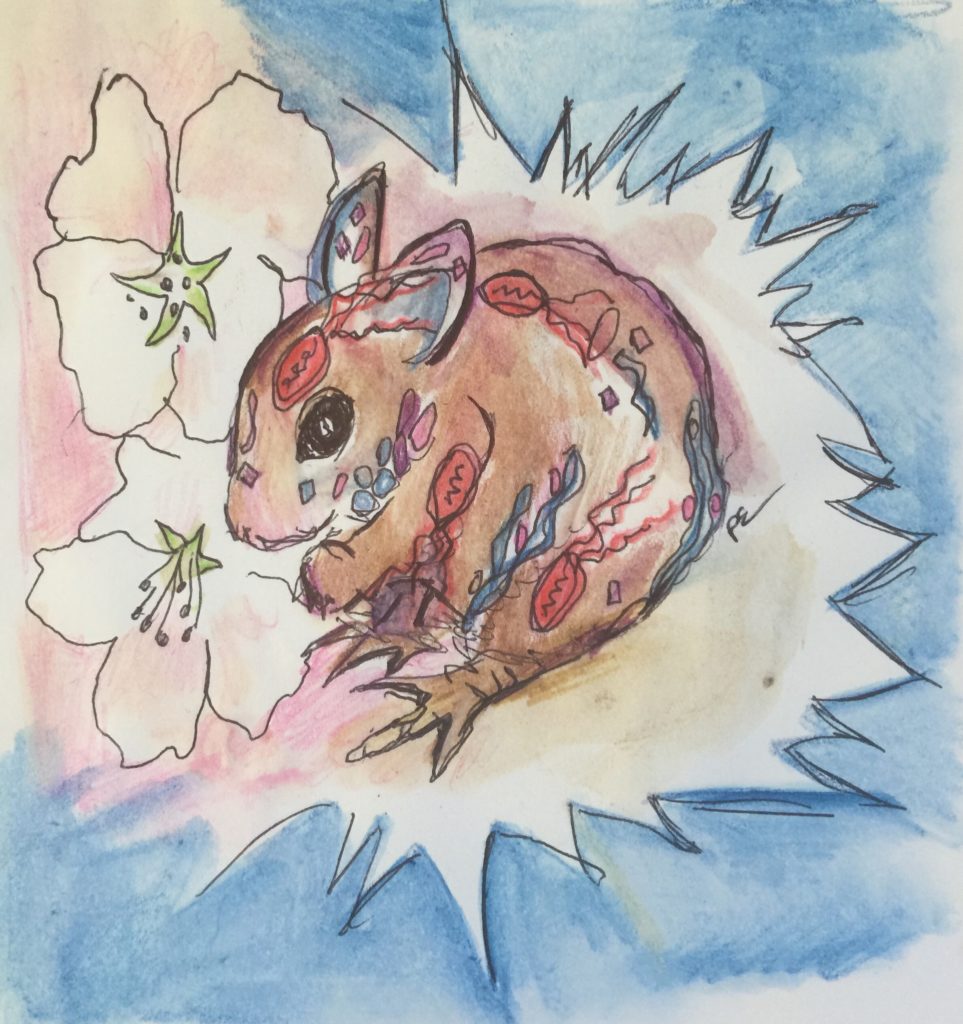Pam England
Birth Story Mentors do more than passively listen to birth stories. In co-creating a new narration, both storyteller and story mentor take into consideration lifestyle, and physical and mental wellbeing which includes a wholesome diet and ultimately microbiome health.
“There are as many miracles to be seen through a microscope as through a telescope. Start with the little things seen through the magnifying glass of wonder. . .”
–Alice Howell, “Sacred Rituals”1
Microbiome
Just as rainforests, grasslands, coral reefs, deserts, or salt marshes each have their own particular ecosystem and community of microbiome, your body is a one-of-a-kind rolling landscape with communities of microbiome that are different from anyone else. Going even further, every organ and system within in your body is a unique ecosystem unto itself, each with a distinct community of microbes, so much so, that the microbiome of your left hand differs from those on your right.5
Until recently, scientists assumed the fetus floated in in a sterile intrauterine environment. However, we now know microorganisms pass from the mother through the umbilical cord to her developing baby and are found in the amniotic water and meconium.6 The microbiota of breast-fed infants appear to be more diverse than the formula-fed babies.7It is estimated that 75 percent of a newborn’s microbiome strains can be traced directly back to the mother. This exposure to microbiome in utero, in labor and immediately after—as well as everything the child will ever come in contact with: pets, people, playgrounds, healthy food or junk food, antibiotics, soaps, etc., determines its unique microbiome community and diversity, and will determine the child’s immune system health, cognitive capacity, and response to stress, anxiety, and trauma later in life. It takes about one to three years for the numbers of microbiome in a newborn to reach adult levels.8
Early life stress, junk food, and germophobic parents contribute to decreased diversity in the gut microbiome. Mice raised in germ-free environments “provided some of the most persuasive evidence for the role of bacteria in gut-brain signaling. Microbiota is necessary for normal stress responsivity, sociability, cognition, and maintaining central nervous system homeostasis by regulating immune function and blood-brain barrier integrity.”9
“Aways a we, and never a me.” —Ed Yong, I Contain Multitudes
To better understand your relationship with
STUDIES ABOUT PHYSICAL AND MENTAL HEALTH RELATED TO MICROBIOME HEALTH
Compelling new studies on microbiome are rapidly changing the way we view human health, behavior, and trauma. It is mind-blowing that infinitesimal microbiome—it takes twelve lined up, side by side, to fit the breadth of a single strand of hair—are playing such a huge role in determining your mental and physical health and well-being from conception to death, particularly important after trauma for you and for three to four generations to come.
Here’s a study regarding mental health to mull
Here’s is fascinating one on intergenerational microbiome transmitting trauma: Scientists trained mice to be afraid of cherry blossoms by shocking the floor of their cage. Offspring from the research mice two generations later—mice who were never taught to be afraid of cherry blossoms—were afraid of cherry blossoms.12 Innate fears or talents might be seeded at the moment of conception by microbiome carrying forward in its genetic material the memory patterns of traumatic or fulfilling experiences of ancestors the offspring (or its parents) never met, and whose stories the child/parents never knew.
This three-part blog continues In Part II, PTSD and Microbiome, Influences and Treatment
Citations and Resources
- Alice Howell. “Sacred Rituals”
- Veronique Greenwood (2017, June 26). Bacteria in the sky may help it to rain. Popular Science. https://www.popsci.com/bacteria-rainfall-weather/
- Ed Yong, (2016). I Contain Multitudes: The Microbes Within Us and a Grander View of Life. UK: Bodley Head and Harper Collins. 4.
- Maria Popova, “Mental Health, Free Will, and Your Microbiota.” Brain Pickings.https://www.brainpickings.org/2016/08/10/i-contain-multitudes-ed-yong/
- Yong, p. 4.
- Jimenez E, Marın ML, et al. (2008). Is meconium from healthy newborns actually sterile? Res Microbiology159, 187–193.
- Friedberg S. Schwartz, et al. A metagenomic study of diet-dependent interaction between gut microbiota and host in infants reveals differences in
immune response. Genome Biology 2012;13:r32.doi : 10.1186/gb-2012-13-4-r32. - Lee Cartwright, lecture.
- Pauline Luczynski (2006, Aug). Growing up in a Bubble: Using Germ-Free Animals to Assess the Influence of the Gut Microbiota on Brain Behavior. International Journal of Neuropsychopharmacology. 19(8). DOI: 10.1093/ijnp/pywo20
- Lee Cartwright, lecture.
- Pam England (2017). Ancient Map for Modern Birth: Preparation, Passage, and Personal Growth during Your Childbearing Year. Albuquerque: Seven Gates Media. pp. 283, 447
- Hank Schultz (2018, June). Microbiome Study on PTSD sufferers adds to baseline date for gut-brain connection. http:..www.nutraingredients-usa.com/article/2018/06/28/micrbiome-study-on-ptsd-sufferers-adds-to-baseline-data-for-gut-brain-connection

